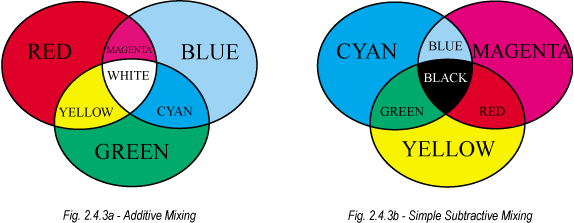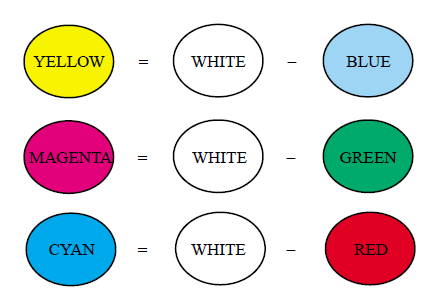Language of Light
2.Concepts
2.4 COLORIMETRY
2.4.3 MIXING OF COLOURS
Issac Newton first demonstrated and explained the composition of white light, by refracting it through a glass prism into its constituent spectral colours. If coloured lights are added, this implies that different lights with different spectral colours composition are added. The resultant effect on the brain can be any of the spectral colours located in the visible spectrum, for example, yellow, or a non-spectral colour which does not appear in the spectrum as monochromatic light, for example, purple. Creation of colours by addition of coloured lights is known as additive mixing. It is found that the eye behaves as though the ‘outputs’ of the three types of cones are additive.
Figure 2.4.3a illustrates the resultant colour effect of mixing three coloured lights, red, green, and blue. The red, green, and blue can be called the primaries and the resulting yellow, cyan, and magenta the secondaries.

The colour of an object is determined by pigments. These are chemicals which create a given colour by subtracting parts of the spectrum of the incident light. The remaining light is reflected and this gives the object its colour characteristic.
Making colours by mixing paint pigments may therefore be described as a process of subtractive mixing (refer to fig. 2.4.3b), since each added pigment subtracts more from the incident light and leaves less to be reflected into the eye. Following are some examples (the incident light in this example is white):


